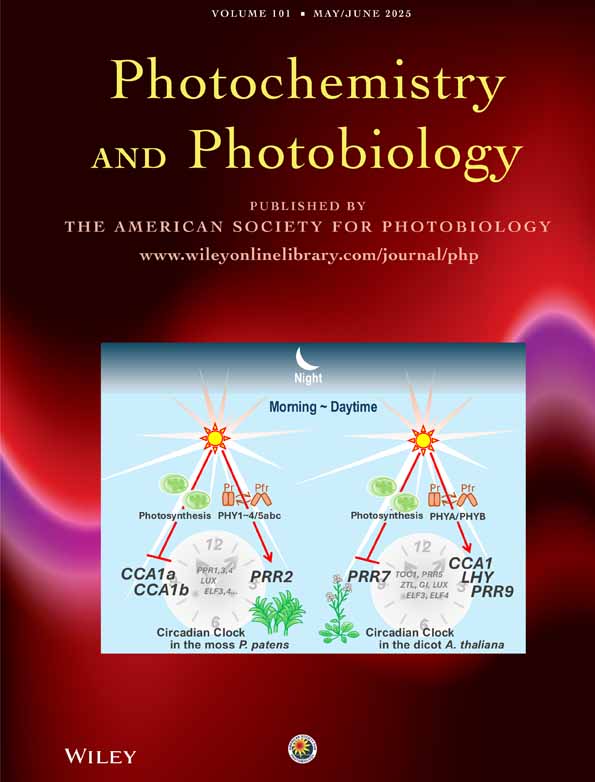ELECTRON TRANSFER REACTIONS OCCURRING UPON LASER FLASH PHOTOLYSIS OF PHOSPHOLIPID BILAYER SYSTEMS CONTAINING CHLOROPHYLL, BENZOQUINONE AND CYTOCHROME c-II. ELECTRICALLY NEUTRAL AND POSITIVELY-CHARGED VESICLES*
*The work described herein was supported in part by the Division of Chemical Sciences, Office of Basic Energy Sciences, Office of Energy Research, US Department of Energy and by the Chinese Academy of Sciences.
Abstract
Abstract— The primary and secondary electron transfer reactions which occurred upon laser flash photolysis of electrically neutral and positively-charged lipid bilayer vesicles containing chlorophyll, benzoquinone and cytochrome c were determined by time-resolved difference spectral and kinetic measurements, and compared with previous results obtained with negatively-charged vesicles (Y. Fang and G. Tollin, Photochem. Photobiol. 1988). The extent to which oxidized cytochrome c could function as an electron acceptor from triplet state chlorophyll, and reduced cytochrome c could act as an electron donor to chlorophyll cation radical, decreased from negatively-charged to electrically neutral to positively-charged vesicles, in agreement with expectations based on changes in the ability of cytochrome c to bind to the bilayer. In all three types of vesicles, cytochrome c reduction by benzoquinone anion radical occurred in the aqueous phase.




